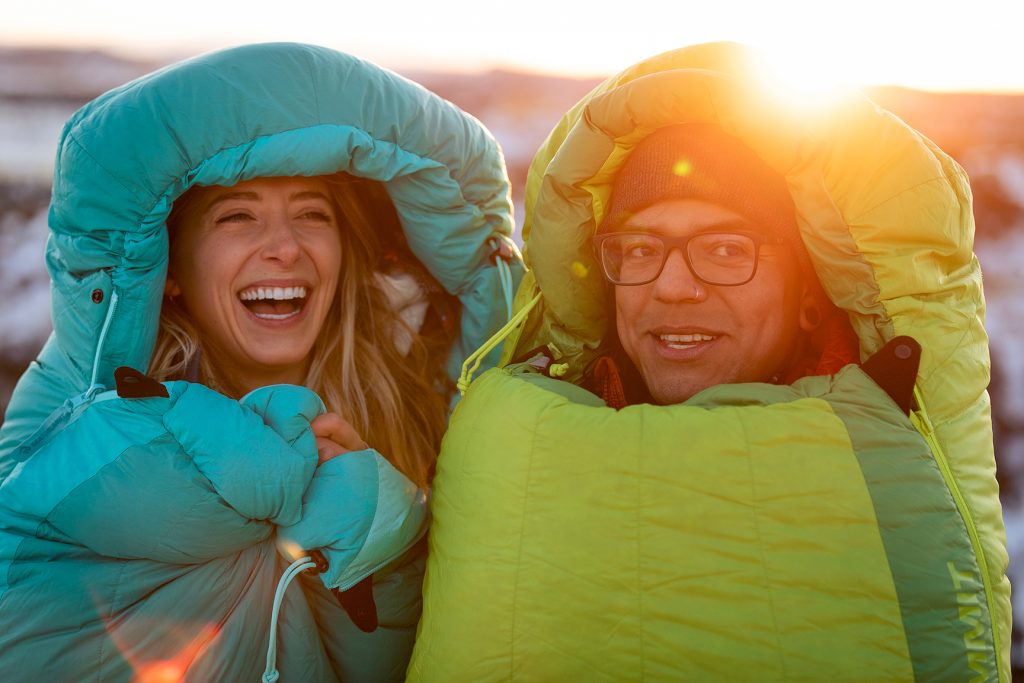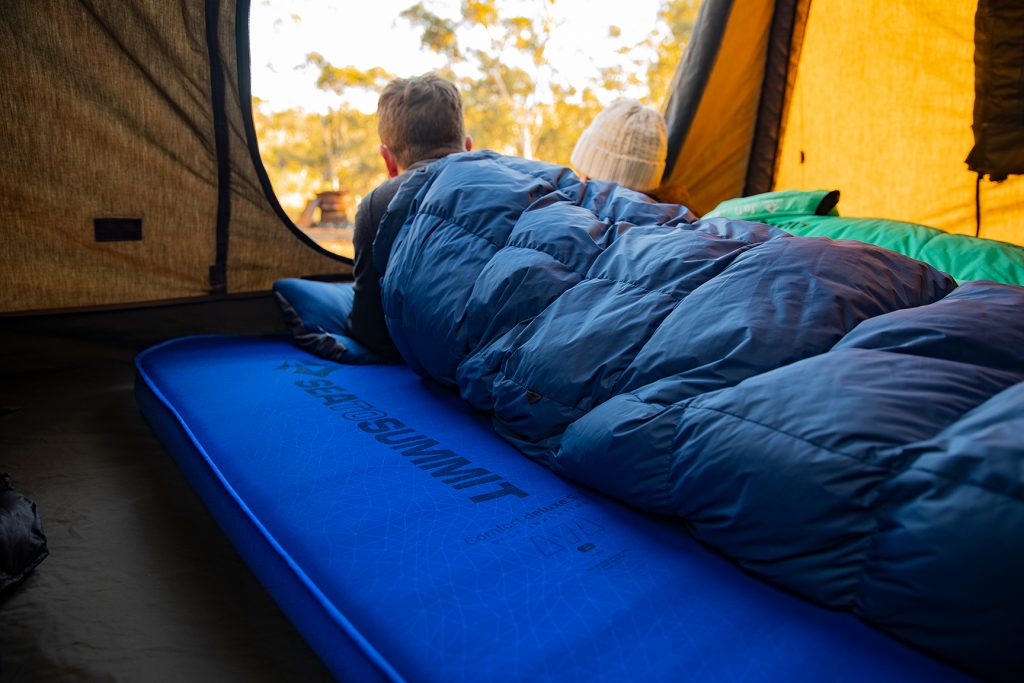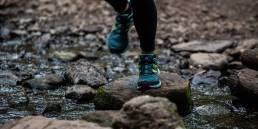Packing for a shoulder-season backpacking trip is challenging, as your pack may change from week to week based on varying forecasts and different gear needs. Sleep systems are particularly difficult to nail down due to everything from personal preference to the abundance of available options to considerations like weight, size, temperature rating, and forecast. Below are seven tips for a shoulder-season sleep system to keep in mind when gearing up for your next big trip.

Seven Tips for Building a Shoulder-Season Sleep System
1. Rethink R-Value
What the heck is that number next to the R on the sleeping pad package you’re holding? It’s R-value, a measurement of the thermal resistance of a sleeping pad. The higher the number, the better the pad will protect your body from losing valuable heat to the ground. Typically, for summer nights in the White Mountains or Adirondacks, backpackers will reach for a pad with an R-value of at least 2 (R2). As the leaves start to change, so do the needs of backpackers. Many transition to pads with R-values closer to 4 (R4) for fall trips.
In the end, R-Value is at the foundation of a smart sleep system; skimp here, and you’re risking an unpleasant night out.
2. Insulating is Like an Onion
As Shrek said, “Ogres are like onions…Ogres have layers. Onions have layers…We both have layers.” A smart sleep system is like both ogres and onions, it also has layers.
Over the summer, you may sleep with very little underneath you. After all, when the weather is favorable you can get away using an ultralight inflatable pad. As cool fall weather arrives, you can boost the warmth of your sleep system by adding a closed-cell foam (CCF) pad like the EXPED FlexMat Foam Mat. R-values are additive, so combining a summer-friendly 1.5 R-Value inflatable pad with a 2 R-Value CCF pad produces a fall-friendly combination boasting a 3.5 R-Value.
Further bolstering the bonafides of CCF pads is their lightweight durability and comparatively affordable price. Many also feature a thermal film on one side designed to reflect your body heat back to you, rather than losing it to the ground.
3. Understand Sleeping Bag Temperature Ratings
Take care when looking at temperature ratings on products like sleeping bags. Many sleeping bags are labeled with a “comfort” temperature, which is an estimate as much as it’s a fact. Sleeping bag temperature ratings are more useful for comparing bags against one another than they are for their real-world performance. A number of variables, such as the weather conditions, the layers a person is wearing, the type of sleeper a person is (warm or cold), and the type of sleeping pad(s) a person is using will all influence the warmth of a sleeping bag.
4. Line Up!
A sleeping bag liner is a staple of my shoulder-season sleep system. Liners add warmth to a sleeping bag, which makes them a great choice for backpackers who have a summer-weight sleeping bag and aren’t ready to invest in another bag. Like sleeping bags, liners come in a variety of weights and allow you to tailor your sleep systems to your personal preferences.
Sleeping bag liners also help you keep your bag dry—a nice bonus for down-bag users—and are much easier to clean than sleeping bags.
5. Consider Synthetic Insulation
The appeal of down sleeping bags is clear: they’re warm, they’re lightweight, and they’re packable. However, synthetic sleeping bags offer some advantages when transitioning from summer to fall, particularly in wet weather.
Unlike down, synthetics retain their insulating properties when wet. Synthetic sleeping bags also dry more quickly than their down counterparts and are generally more affordable. It’s worth noting that in recent years, down has closed the wet-weather gap, and today it’s common that the down used in sleeping bags features a hydrophobic treatment (that is, it has a coating that increases its water repellency and the speed at which it dries).
Ultimately, consider the type of conditions you’re going to camp in. Are you a fair-weather backpacker? Down will likely work great. But, if you’re out in bad weather, a synthetic bag is probably a better choice for everything from surprise rain showers to early-season snow.
6. It’s The Little Things
Whether you call them luxury items or necessities, little things like hand warmers, neck gaiters, a dry base layer, and wool socks can all add comfort during those chilly September and October nights. For example, you can use hand warmers to preheat your sleeping bag before calling it a night.
A neck gaiter can serve as a hat on super-cold nights to help trap heat, or you can stuff it with extra layers and use it as a pillow (adding another layer between your head and the ground). There is simply nothing better on a cold, soggy fall day in the backcountry than putting on a dry base layer and a fresh pair of socks—it seemingly warms the body and morale instantly.
7. Eat Before You Sleep: Fact or Fiction?
You might think “I do this anyway” or “What good could it do?” The premise is that eating right before bed will keep you warmer through the night. When your body is digesting said food, breaking down fats and carbs, it’s naturally warming you internally. Eating right before bed doesn’t reduce the need for a smart sleep system, but it might help you feel warmer. Before hitting the hay, have a high-protein, high-fat snack like cheese or nuts. Another option is to eat dinner right before hitting the sack. Who doesn’t like going into a food coma after a hard day on the trail?

Building Your Own Shoulder-Season Sleep System
Above are just a few suggestions for building a shoulder-season sleep system that works for you. Now what? The fun part! Start piecing together your own sleep system and begin testing it. Start with short familiar trips close to home or easier backpacking trips with low consequences—discovering what works for you and what doesn’t—before moving on to bigger more ambitious adventures.
Ethan Gresko
Ethan is a New York State native who enjoys day hikes between the Adirondacks and Hudson Valley, to the Finger Lakes. He loves the written word, is an aspiring 46er, and a firm believer that you have to go down before you go up!




